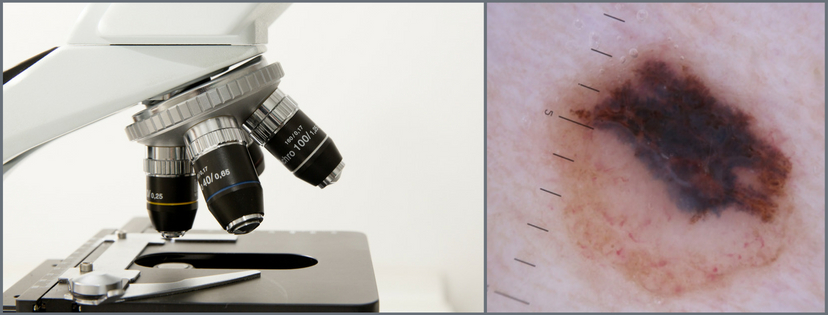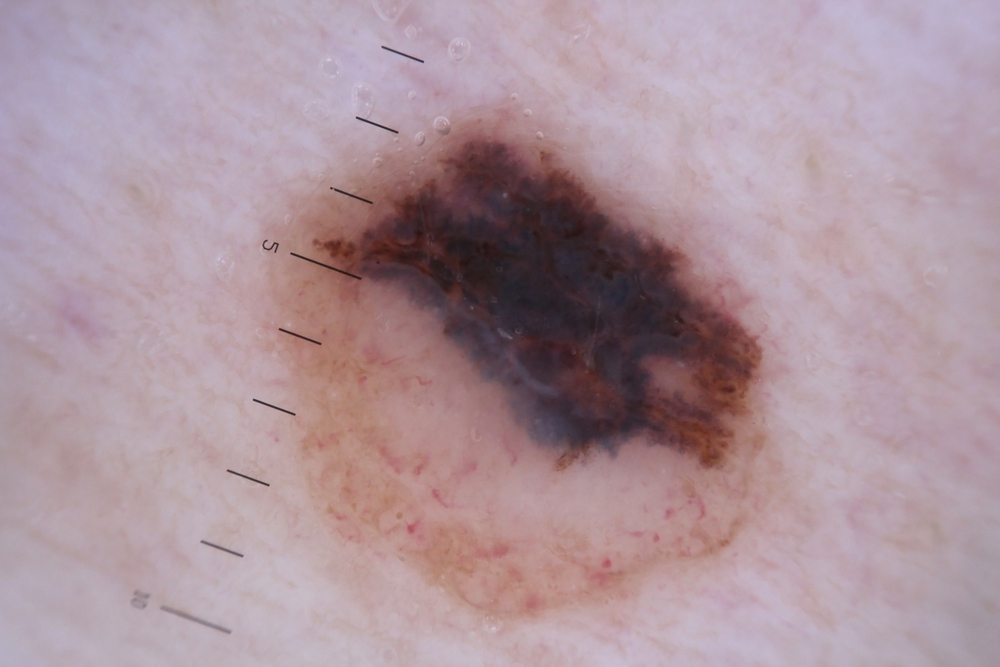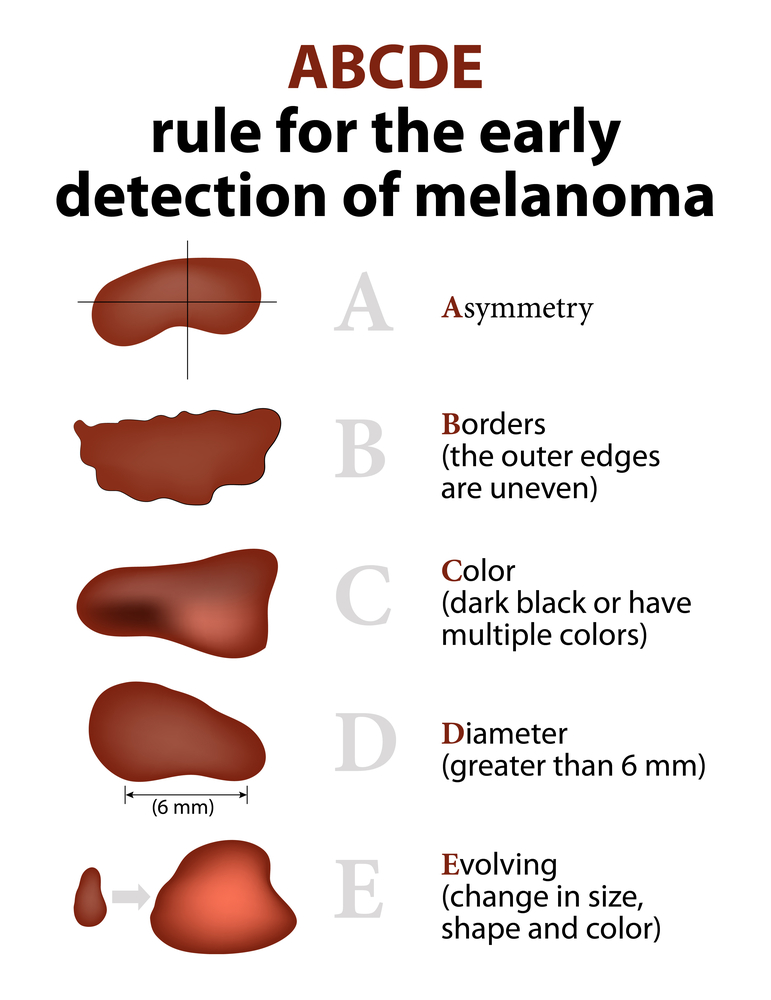 Skin cancer is the most common form of cancer in the United States.
Skin cancer is the most common form of cancer in the United States.
May is Melanoma Awareness Month, which means it is a perfect time to talk about this dangerous form of skin cancer. Here you will learn how to identify and prevent melanoma.
Melanoma: What exactly is it?
There are three primary layers to your skin. Melanocytes are housed in the first layer of the skin. Melanocytes are the cells that can turn into melanoma skin cancer. These cancerous growths develop when unrepaired DNA damage causes mutations or defects in the skin cells. This DNA damage is usually caused by high rates of exposure to ultraviolet (UV) radiation such as sun exposure and tanning beds. The damaged and unrepaired DNA then leads the cells to multiply rapidly and form malignant (cancerous) tumors.
While melanoma is much less common than basal cell and squamous cell skin cancers, it is more dangerous because it’s much more likely to spread to other parts of the body if it is not caught early. Melanoma is on the rise: rates in the U.S. have doubled from 1982 to 2011. Today, more than one million Americans are living with melanoma.
Recognizing Melanoma: Signs, Symptoms and Self-Exams

Moles, brown spots and growths on the skin are usually harmless — but not always. Be wary, because melanoma tumors often look like moles. In fact, some tumors develop from moles that were already on your skin. This is why it’s so important to get to know your skin very well: so you can recognize any changes in the moles on your body.
The majority of melanoma tumors are black or brown, but sometimes they show up as skin-colored, pink, red, purple, blue or white. These tumors can develop anywhere on your skin, but they are most likely to start on the back, chest, legs, neck and face.
Once a month throughout the year, look and feel for suspicious lesions on your body by performing a head-to-toe skin self-exam. These exams are so important because they can help you identify potential melanoma in its early stage when it can be cured.
When you perform your self-exams, take note of any new moles or growths and look for existing growths that have changed or grown in any way. Lesions that change, itch, bleed or don’t heal should be addressed right away.
 You can also use the ABCDE strategy to help identify any concerning moles. Look for the ABCDE signs of melanoma, and if you see one or more, make an appointment with your dermatologist immediately.
You can also use the ABCDE strategy to help identify any concerning moles. Look for the ABCDE signs of melanoma, and if you see one or more, make an appointment with your dermatologist immediately.
- A — Asymetrical Shape: Melanoma lesions are often irregular in shape, or not symmetrical. Benign (non-cancerous) moles are usually symmetrical.
- B — Border: Typically, benign moles have smooth and even borders. Melanoma lesions usually have irregular borders that are difficult to define.
- C — Color: The presence of more than one color or the uneven distribution of color can sometimes be a warning sign of melanoma. Benign moles are usually a single shade of brown or tan.
- D — Diameter: Melanoma lesions are often greater than six millimeters in diameter (about the size of a pencil eraser.)
- E — Evolution: The evolution of your mole(s) is the most important factor to consider when it comes to diagnosing melanoma. If you notice changes in moles or new moles emerging, contact your dermatologist immediately.
The Faces and Causes of Melanoma
Really, anyone is at risk for melanoma, however the risk increases as people age. The average age of those diagnosed is 63, but melanoma is not uncommon among people younger than 30. In fact, it’s one of the most common cancers in young adults, especially young women. It is more than 20 times more common in whites than it is in African Americans.
The risk for each person can be affected by a number of different factors, such as:
- Moles: Anyone with 100 moles is at greater risk for melanoma.
- UV exposure: Cumulative lifetime exposure to UV rays is a major risk factor. Increased frequency of sunburns. Sunlight is the main source of UV rays. Tanning beds and sun lamps are also sources of UV rays.
- Genetics: People with red or blonde hair, blue or green eyes, or fair skin that freckles or burns easily are at increased risk. Most importantly, those with a family or personal history have a significantly higher risk.
Preventing and Treating Melanoma
If melanoma is recognized and treated early, it is almost always curable. If it is not caught early, the cancer can advance and spread to other parts of the body, where it becomes harder to treat and can be fatal.
It is ideal to prevent melanoma so you don’t even have to treat it. Here are the best ways to protect yourself against melanoma:
- Avoid tanning, never use UV tanning beds and don’t let yourself get sunburned.
- Use a broad spectrum (UVA/UVB) sunscreen with at least a sun protection factor (SPF) 50. Mineral based sunscreen containing titanium dioxide and zinc oxide are ideal sunscreen to use because they work immediately unlike chemical sunscreen where you have to wait 20 minutes before sun exposure.
- Use protective clothing such as hats but specifically clothing with impregnated sunscreen to cover up in the sun.
Use Melanoma Awareness Month to take action. Be vigilant about your skin — be aware of current and new moles, protect your skin from the sun and understand what genetic predispositions you may have.

Dr. Lady Dy is one of the most sought after dermatologists in the United States. She has studied all over the world and has worked with the world’s leading experts in skin and hair. Her patients fly from all over North America, Dubai, Norway and Korea to be treated by her in Chicago. To learn more about laser treatments, contact Dy Dermatology Center. Click here to request an appointment or call the dermatology center at (847) 832-1185.
